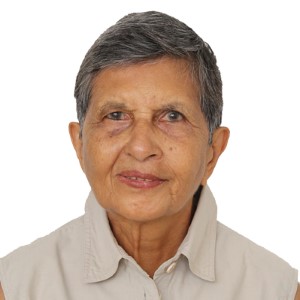Repression and injustice have always and invariably led to resistance, rejection and struggle. Thus, we see that since the times some of the foreign forces visiting our East African shores sought to exploit and dominate our lands beyond the hospitality the indigenous people extended to them; various heroic figures have arisen to organize a resistance to this theft of our lands, culture, spiritual beliefs, traditions, languages, etc.
Inter-ethnic and inter-continental battles and conflicts were natural aspects of developing economic and trading societies – expropriation of vast areas of land and subjugation of its people was quite another matter and totally unacceptable to the indigenous ‘natives’ of the land.
The first appearance of this aggressive policy in East Africa was demonstrated by the Portuguese arrival in 1498. The name of ‘Don Jeronimo’ was immortalised by Ngugi wa Thiongo in a movie. Recent research by Samia Omar focuses on women who resisted the colonial onslaught. And popularly known and lauded are the names of anti-British indigenous freedom fighters such as Waiyaki wa Hinga, Me Katilili, Koitalel, Moraa Ng’iti and others.
Absent entirely from the historiography of this period as a growing force against British colonialism is the role of one community – that of the South Asian/Indian community. This article seeks to draw attention to this lacuna.
It seeks especially to highlight the increasingly antagonistic role played by A M Jeevanjee, the Ghadarites, the EAINC, MA Desai, Isher Dass and the star journalists of the Daily Chronicle in both nationalizing and internationalizing the early struggles against British Imperialism. The interactive context between A M Jeevanjee, Desai and Thuku which led to the Devonshire Declaration, and the ‘Paramountcy of the African’ clause which determined the future course of Kenya’s history needs further research and exposure. I am grateful to Mathew Parker’s book One Fine Day for drawing my attention to the need for a better understanding of the Jeevanjee-Thuku period. At the beginning of the 20th century the British Government had taken over control of the East African Protectorate (EAP) from the Imperial British East Africa Company (IBEAC) and built the Uganda Railway to Kisumu. (All of this was following the Scramble for Africa Conference held in Berlin in 1984). It had done so largely with the labour (often forced) and skill of the local African and Indian population as well as recruiting labour and artisans from their colony in India. Of course, the overseers were all white colonial officers.
In order to ‘develop’ this now British territory, white immigrants from the UK, including unemployable aristocrats and the Boers from South Africa were invited to settle here. McGregor Ross describes them as: ‘loose, careless, unscrupulous, objectionable swine’. In no time racism reared its ugly head and segregation, discrimination and injustice were institutionalised.
LM Savle (read more about him later) described in colonial writings as ‘a fearsome elephant hunter’ set up an Indian Association in Mombasa in 1901 in order to counter this racism.
Alibhai Mulla Jeevanjee, a well-to-do entrepreneur from Karachi who had returned to Mombasa at the request of the colonialists to help them build the railway, and later to develop the urban services and institutions in the EAP; was also, together with his Indian community, being racially targeted. He therefore joined Savle.


AM Jeevanjee had a political/social agenda. A colonial newspaper, the East Africa & Uganda Mail established in late 1800s, was vitriolic in its criticism of the Indians. As a riposte, Jeevanjee started the African Standard in competition in November 1901; by 1904, the Mail had ceased publication. The African Standard continues as the Standard to date.
Jeevanjee had no journalistic or political ambitions. He was a loyal subject of the British Empire and an admirer of Queen Victoria. Briefly: He had made a fortune on the Uganda Railway, had donated Jeevanjee Gardens (including a statue commemorating the Queen) to the Nairobi township, helped to develop urban infrastructure but also grown the Indian Associations into political organisations; and then had returned to his businesses in India.
In 1907, a Legislative Council was formed, one seat was reserved for the Indian community, of course none for the African. The Indians requested Jeevanjee to return and take up that appointment. Jeevanjee did so in 1909, but served only one term in that highly racist, white set up. He had a strong penchant for equality of opportunity for ALL – Queen Victoria had promised that for her subjects. So, he then travelled to the UK, Europe, India and South Africa to voice his political complaints and publicise the local colonial injustices.
In India he also participated in the opposition to the increasing financial opaqueness and authoritarianism of his community’s (Bohra) high priest (Syedna) clique and in 1917 appeared as a witness in the Chandabhai Gulla Case held in Mumbai. As a result, he and his entire family were ex-communicated.
In 1914, Jeevanjee shifted his base to the EAP and founded the East Africa Indian National Congress (EAINC), modelled on the same in India. Of the founding members were A Visram, LM Savle and his wife, K Dwivedi (more about them later) and S Thakur. In 1920 at the end of WW1, at the Third Congress of the EAINC, Jeevanjee delivered a stinging criticism of the Settler colonial Government in his Presidential address. Issues touched on were the White Highlands, segregation, taxation without representation, the contributions of the Indian community, immigration and minority rights. He assured ‘Arabs and the natives of his support and solidarity in their struggle to better their position’. He did not call for Independence or self-rule or any such revolutionary change – his demands were reformist and very much restricted to his Indian community in accordance with the colonial socio-political structure of his day.
Jeevanjee recruited Manilal Ambalal Desai as Secretary to inspire and energise the EAINC. Over 45,000 Africans were killed in the British v German skirmishes in the EAP during WW1. Countless more were impoverished and displaced from their land and families – compensation for war widows, fair land adjudication and such basic rules as applied to the white soldiers were pipe dreams for the non-white. And all this in a war that had absolutely nothing to do with the black and coloured races of the EAP. In addition, the colonial imposition of chiefs to oversee the clans had destroyed their democratic forms of governance. Tension was high as was hunger, disease and protest.


African-Asian interaction was generated. Desai teamed up with Harry Thuku (a young Kikuyu leader from a relatively wealthy Kikuyu family), printed his Tangazo tabloid, Jeevanjee lent Thuku his car and chauffeur to tour the rural areas and politicise the people. The Settlers and Missionaries became alarmed at this growing solidarity between the Africans and Indians and objected strongly. Thuku on the other hand informed the UK Colonial Office that, ‘Indians are our best Friends’ and wrote, ‘the only voice that has been consistently raised in favour of equitable treatment of the native population is to be found in the Indian community’.
In 1920, EAP becomes ‘KENYA’. The following year Thuku formed first the Young Kikuyu Association and soon changed it to the East Africa Association for all black Africans; thus cutting across ethnic boundaries. Hugely popular and a gifted orator, he was soon addressing crowds of thousands and garnering political as well as financial clout. On 14 March 1922, bowing to white settler and missionary demands, Thuku was arrested. A crowd peacefully demanding his release was brutally shot at … Nyanjiru Muthoni became a freedom fighter. Thuku was detained in Kismayu, he requested his Indian friends to take care of his elderly mother.
Racial tension and colonial exploitation in Nairobi were at an all-time high and explosive. The UK Colonial Office considered making concessions which the EAA and the EAINC had asked for, Kenya’s white community threatened armed revolt at any such move.
In 1923, the UK Colonial Office under Lord Devonshire held a conference in London of Kenyan delegates to discuss the colony’s future. In attendance were: Representatives of the EAINC, the Colonists’ Convention led by Lord Delamere who was accompanied by two Maasais, missionary representatives and a contingent of leaders from India. The EAINC delegation was led by MA Desai and included Jeevanjee.
The final Devonshire Declaration resolution stated that ‘Kenya was a “trusteeship” in which the interests of the black Africans are paramount’. It made absolutely no concessions to the Indians and let the white Settlers off the hook. The Indians were devastated. African paramountcy took 40 more years and a fierce guerilla war (Mau Mau) to become a reality – the first step was in 1924, the formation of KAU in which Jomo Kenyatta cut his political teeth. But most importantly, Kenya escaped becoming part of an EA Federation and adopting ‘dominion status’- the fate of South Africa.
Now began a concerted effort by the white Settlers, their missionary friends and the UK Government to drive a wedge between the Indians and Africans. They did so by painting the South Asians as exploiters, dirty, immoral, ungodly and an obstacle to African progress and freedom.
The die was cast! Fake news and false propaganda is by no means a recent phenomenon!
In 1926, Desai had suddenly died and Jeevanjee had recruited Isher Dass, a fiery Marxist, to replace him. Jeevanjee himself was elected to preside over the 1926 EAINC in the hope that he could help to seal the growing divides – class, religious, political and ideological – in the Indian community; but it was a futile exercise. A 1927 photograph shows Jeevanjee seated with Governor Grigg and a host of other high-ranking officials but in actual fact he was fast losing his economic status. For too long he had neglected his businesses as he struggled for equal rights, and the forces he opposed were not shy of sabotaging them. He passed away in Nairobi in 1936 having lost all his wealth and property and leaving his sons and daughters in dire straits. In 1931, his younger brother, TM Jeevanjee, who was much more politically compliant, was knighted by the British King and remained economically wealthy and secure.
As mentioned earlier, the founder members of the EAINC in 1914 included three persons who are likely to have been Ghadarites. A detailed account of this group of Indians is recorded in Awaaz Issue 3, 2022. Briefly, the Ghadar Party had its roots in India but its headquarters in San Francisco, USA and had a global network. It was a left organization with strong links to Moscow and opposed imperialism and British colonialism. Owing to the latter it had found a welcome home in the USA and had branches globally including the EAP.
The three EAINC members referred to were LM Savle, his wife and K Dwiwedi. An Indian woman dabbling in politics in the EAP in1914!!! Unfortunately, and not at all surprisingly, we, to date, do not know her maiden name or have any further information about her. Historical records tell us about LM Savle and Dwivedi; but who were these people really? Why is it that at the outbreak of WW1, they, together with other Ghadarites, were arrested by the British Government and accused of treason? Some were deported back to India, others were imprisoned in Fort Jesus, Mombasa, while a handful were hanged in Voi. The EAINC three-some were released on the condition they would not ever participate in East African politics. And that is the last we hear of them but many questions linger. What was their role in the EAINC; their relationship to Jeevanjee and the Indian, maybe even African, communities. Will we ever know?


At least what we do know is that in addition to the indigenous resistance put up by MeKatilili and many others, there were other forces challenging British colonialism here and shaping Kenya’s history. The Devonshire Declaration was no doubt a landmark but South Asian radical leaders continued to ‘challenge colonialism’ as AM Jeevanjee had started to in 1901. Through journalism, public relations nationally and internationally, political organizing, co-operation with and support to African colleagues and finally to the Kenyan working class.
In spite of the closure of Desai’s East African Chronicle by the colonial authorities and his death in 1926, Sitaram Achariar printed Jomo Kenyatta’s Muigwithania in the late 1920’s, GL Vidyarthi launched the Colonial Times in 1933 and made its press available to African editors and leaders, getting imprisoned several times for it. In 1947, a group of leftist South Asian, Kenya-born journalists, financiers, editors and friends established the Daily Chronicle which openly opposed colonialism and supported African demands for land and freedom.
This newspaper’s revolutionary editions were soon ‘nipped in the bud’ but by this time Makhan Singh, a communist, had appeared on the scene and organized a trade union movement of Kenya’s Asian and African workers which demanded not just more equitable labour conditions; but independence for Kenya from colonialism with a hint of socialism. He was not alone but part of a group of South Asian communists and ex-ghadarites.


The impact made by Makhan Singh and Pio Gama Pinto are better known, some more reference to the likes of Pranlal Sheth, Ambu Patel, Lila Patel, Chanan Singh, Dr Yusuf Eraj and others would be appropriate. As we revise our history let us be as inclusive as possible so that we may build a truly Kenyan nation.
Kenya’s South Asian community has played its part in the glorious history of anti-colonial struggle in Kenya – this needs to be recognized, further researched, studied and documented. This concern applies also to the few Europeans who I am aware of who supported equality and justice in colonial Kenya – Names such as John Nottingham, Douglas Rogers, Peter Wright and LW Ritch should not be forgotten.

Major Sources:
Challenge to Colonialism – The Struggle of Alibhai Mulla Jeevanjee for Equal Rights in Kenya, 1997, by Zarina Patel
Unquiet – The Life & Times of Makhan Singh, 2006, by Zarina Patel
One Fine Day – 29 September 1923, Britain’s Empire on the Brink, 2023, by Mathew Parker
An Autobiography by Harry Thuku, 1970









